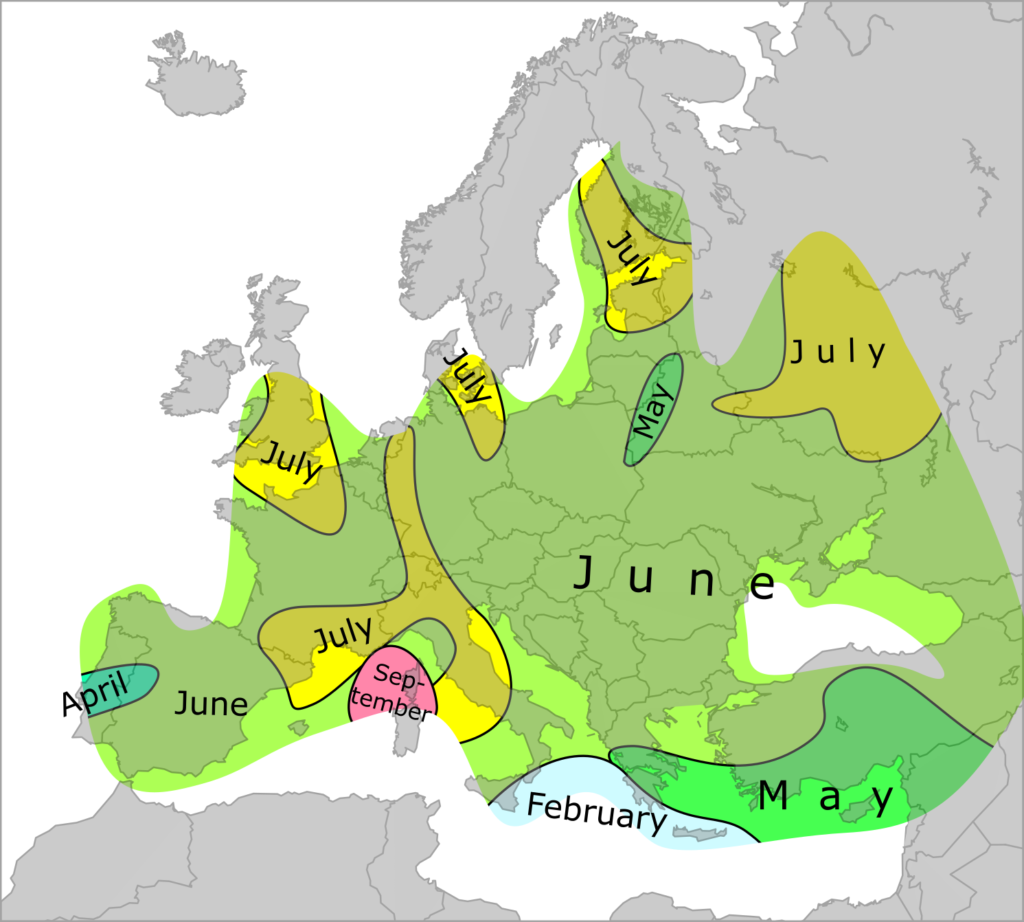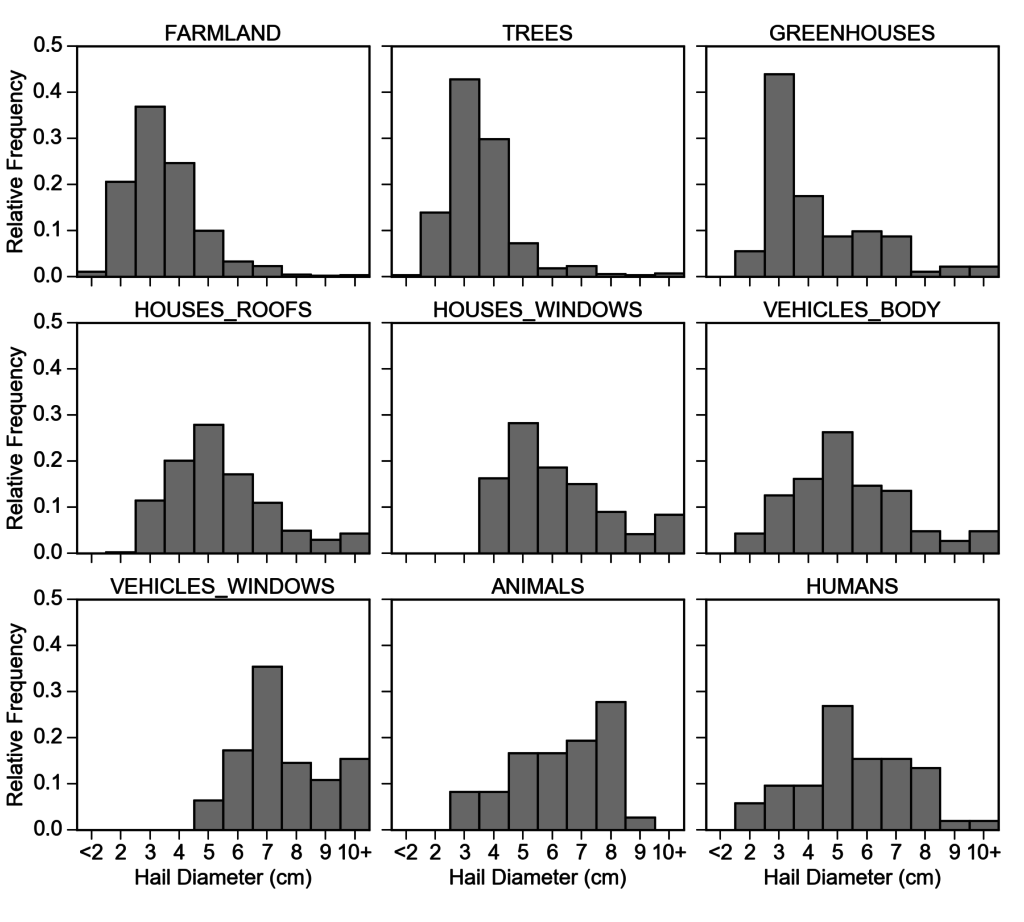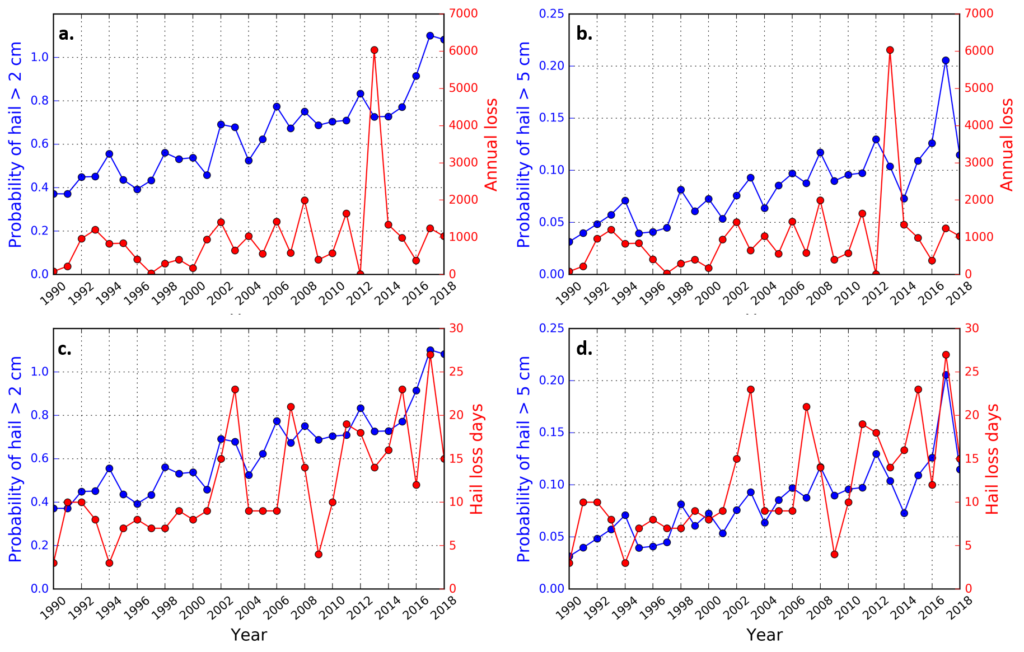A new study, resulting from cooperation of researches from ESSL and Munich-RE, called “Large hail incidence and its economic and societal impacts across Europe” has just been published in the Monthly Weather Review.
This study addresses the large hail incidence in Europe and its economic and societal impacts from multiple perspectives. Two main datasets used in the study were the European Severe Weather Database and the NatCatDATABASE of Munich-RE. While authors acknowledge that ESWD still does not allow for a homogeneous climatology of large hail across whole Europe, one can still learn many things from the data, such as the peak month of large hail occurrence in Europe (Fig. 1), hail size distribution, or how many injuries were reported with large hail.

longitude grid. Figure © Copyright 2019 AMS.
Damage description that can be entered in the ESWD was used to investigate how the different types of hail damage depend on the reported hail sizes. It was found out that damage to trees, crops or greenhouses is typically reported with hail sizes of 2 – 4 cm in diameter, but damage to roofs, vehicles and windows usually occurs with hail size larger than 4 cm (Fig 2.). Furthermore, damage to vehicle windows was never reported with hail smaller than 5 cm in diameter.

Figure © Copyright 2019 AMS.
Authors also looked at how hail-related monetary losses have evolved since 1990 over Germany based on the data from NatCatDATABASE of Munich-RE. It was found out that while time serie of annual hail losses is dominated by outliers with very high losses (e.g. the event of 27 to 28 July 2013, which claimed over 4 billions of $ in total losses), the number of annual hail loss days shows a statistically significant rising trend (Fig. 3). Besides increasing vulnerability, the frequency of severe storm environments capable of producing large hail has increased as well, as demonstrated by ARCHaMo models Rädler et al. (2018) applied to the ERA-Interim data.

More information can be found in the article: Púčik, T., C. Castellano, P. Groenemeijer, T. Kühne, A.T. Rädler, B. Antonescu, and E. Faust, 2019: Large Hail Incidence and Its Economic and Societal Impacts across Europe.Mon. Wea. Rev.,147, 3901–3916, https://doi.org/10.1175/MWR-D-19-0204.1
